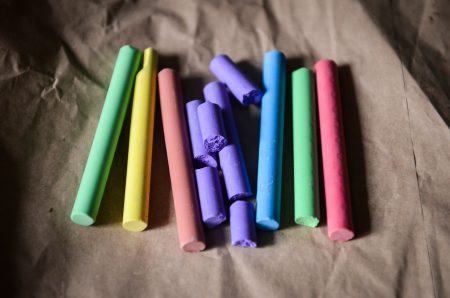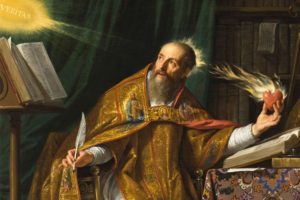The author of some 90 books, G. K. Chesterton (1874-1936) was a British writer of unsurpassed popularity in his day. Born into a nominally Anglican family, he slid into agnosticism by the age of 16, but by the turn of the century, he was beginning to speak favorably of the Christian faith. His wife led him back into the Anglican church, and by 1908, he was professing faith in Christ. In 1922, he converted to Catholicism.
The following passage from “A Piece of Chalk,” written for the Daily News, November 4, 1905,1reveals his budding appreciation for the splendor of biblical morality. Here Chesterton reflects upon the frustration he felt on a summer holiday when he discovered he had left the house without white chalk. With brown paper and six bright colors in hand, he had ventured out into the countryside to do some drawing. But his palette was fatally flawed for lack of white, which is not the absence of color, but a “shining and affirmative thing” in its own right. Chesterton compares this to the virtues, explaining that mercy and chastity are not so much the absence of cruelty and sexual wrong as shining, gorgeous, and positive manifestations of moral whiteness.
[A]s I sat scrawling these silly figures on the brown paper, it began to dawn on me, to my great disgust, that I had left one chalk, and that a most exquisite and essential chalk, behind. I searched all my pockets, but I could not find any white chalk. Now, those who are acquainted with all the philosophy (nay, religion) which is typified in the art of drawing on brown paper, know that white is positive and essential. I cannot avoid remarking here upon a moral significance. One of the wise and awful truths which this brown-paper art reveals, is this, that white is a colour. It is not a mere absence of colour; it is a shining and affirmative thing, as fierce as red, as definite as black. When (so to speak) your pencil grows red-hot, it draws roses; when it grows white-hot, it draws stars. And one of the two or three defiant verities of the best religious morality, of real Christianity for example, is exactly the same thing; the chief assertion of religious morality is that white is a colour. Virtue is not the absence of vices or the avoidance of moral dangers; virtue is a vivid and separate thing, like pain or a particular smell. Mercy does not mean not being cruel or sparing people revenge or punishment; it means a plain and positive thing like the sun, which one has either seen or not seen. Chastity does not mean abstention from sexual wrong; it means something flaming, like Joan of Arc. In a word, God paints in many colours; but He never paints so gorgeously, I had almost said so gaudily, as when He paints in white. In a sense our age has realized this fact, and expressed it in our sullen costume. For if it were really true that white was a blank and colourless thing, negative and non-committal, then white would be used instead of black and grey for the funeral dress of this pessimistic period. . . Which is not the case.
Footnotes:
1. Reprinted originally in Tremendous Trifles. Also reprinted in G. K. Chesteron, “A Piece of Chalk,”The Art of the Personal Essay: An Anthology from the Classical Era to the Present, ed. Phillip Lopate (New York: Doubleday, 1995), 249-252.





